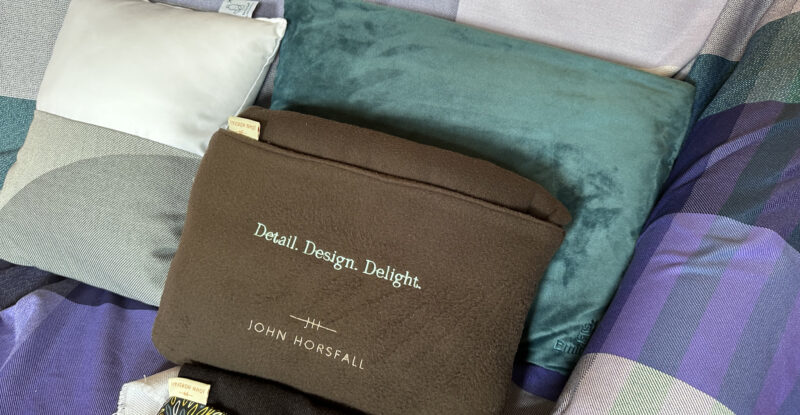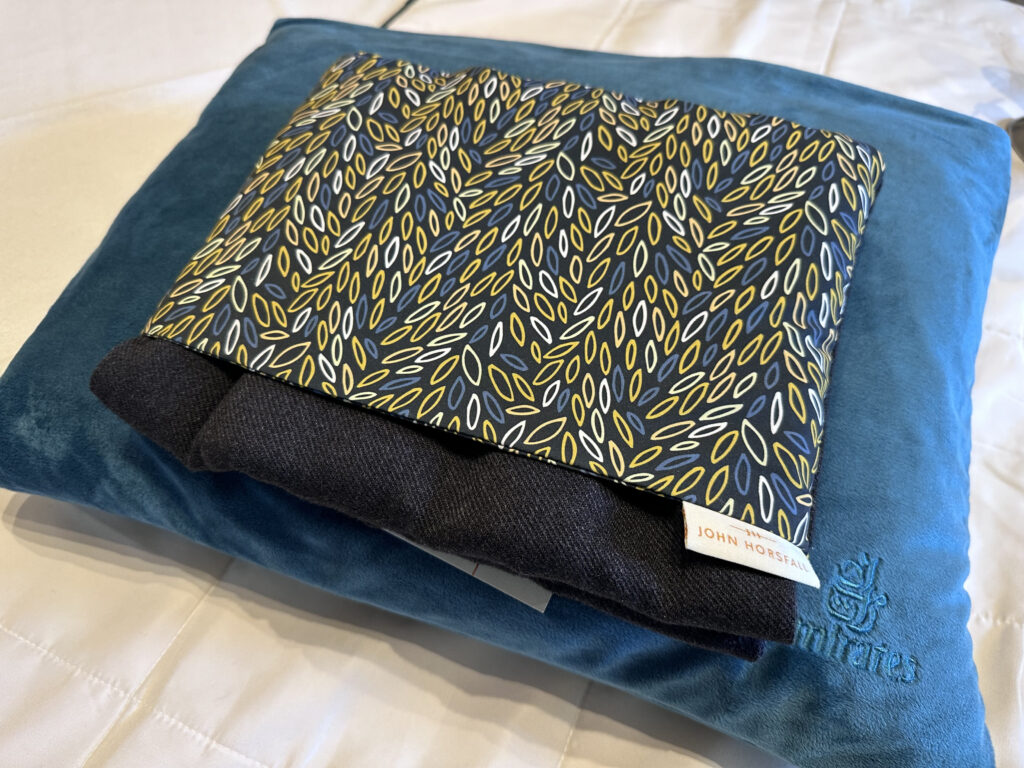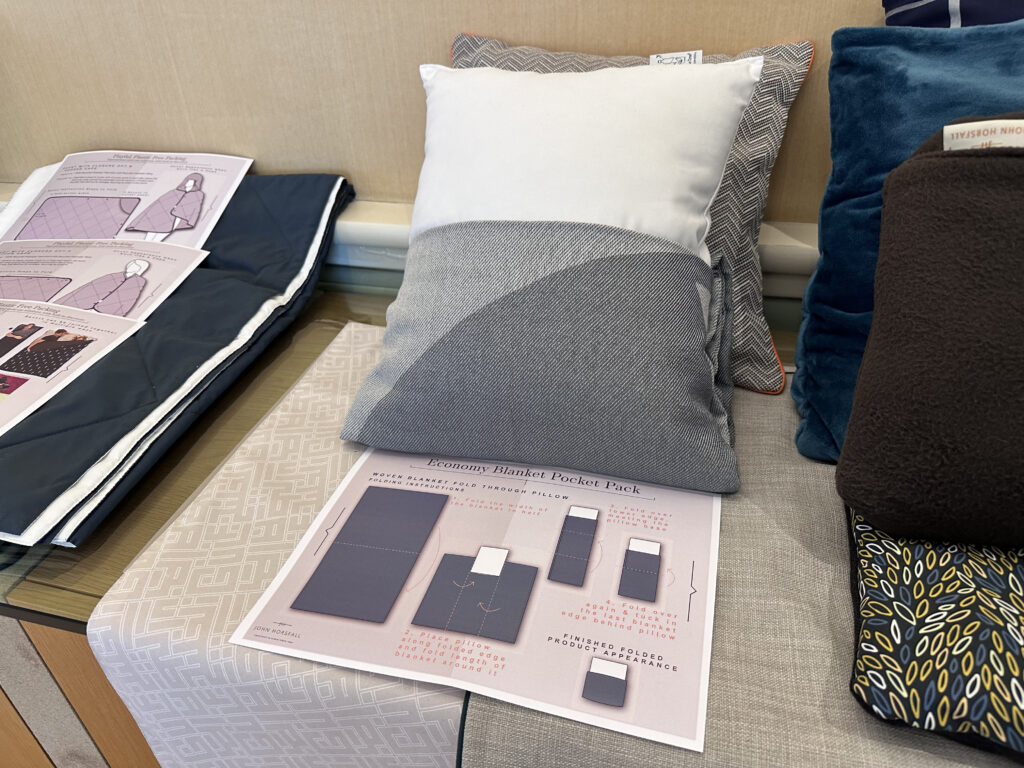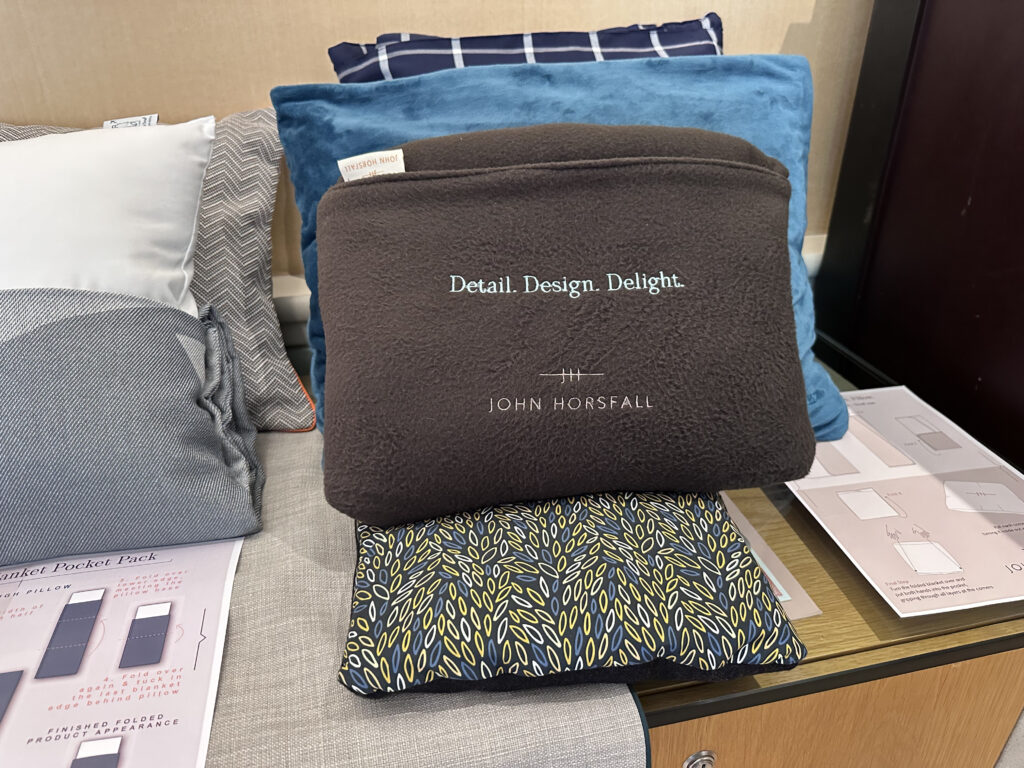 HUDDERSFIELD — One of the fascinating challenges in premium classes today is what I call Mount Blankets: the collection of soft product placed on the seat that you need to find somewhere to stow before you’re able to sit down after boarding.
HUDDERSFIELD — One of the fascinating challenges in premium classes today is what I call Mount Blankets: the collection of soft product placed on the seat that you need to find somewhere to stow before you’re able to sit down after boarding.
Sure, between the pillow, cushion, blanket, duvet, mattress pad, pyjamas, slippers and amenity kit, “too many nice things at once” is a lovely problem to have. But without ample storage spaces (and ones certified for stowing soft product for takeoff and landing) there’s a lot for passengers to stow away — especially at a time where many airlines are eschewing overhead bins up front.
Enter a fascinating series of options from soft product specialists John Horsfall, whose leafy Huddersfield, West Yorkshire headquarters I visited recently. The idea is to design a blanket with an internal pocket, into which the blanket itself can be folded — to keep it neat and tidy, to use the folded bundle as a cushion, and to avoid the need for a wasteful plastic wrapper.
Product manager Kirsty Sumner tells Runway Girl Network that “the pocket pack is something that we have showcased a number of times in a number of different ways. It can be used for less plastic packaging, but also to reduce numbers of items on the seat: it can be converted from a pillow to a mattress, or a pillow to a blanket, or a pillow to a duvet, so it helps with storage. It’s a design feature: something a bit creative that that can be used in a multitude of different ways to promote brand or a route. Logistically, it helps with the customer with the numbers of things on seats, as well.”
A pocket pack makes sense both in premium cabins and in economy or premium economy: storage for soft product is at a minimum throughout the aircraft, after all.
“It’s a way for the airline to personalise their brand, their seat feature — they look to offer as many … multifunctions as possible,” Sumner says. “There’s different ways to personalise it with a blanket and a pillow, but if the actual item itself can be transformed into something else, it just adds another element to the whole experience.”
The pocket pack idea also means that specific soft product items can serve multiple purposes and be used for longer during the flight. For example, a mattress pad might be stuffed into a bin for takeoff and only be used for a fraction of a flight.
If that mattress were to be presented as a lumbar support pillow, say, or as a rolled side pillow for a wider seat or sofa-style hard product (think Finnair), comfort — and the savings in weight, cost and laundry from needing only one product rather than two — would be improved.
Indeed, says Sumner, “with some of the bigger seats, there’s quite a lot of room. People like to sit in different ways: they want lumbar support, they want something behind their neck, and adding another pillow is yet something else to throw on the floor when you don’t want it. But if you had it tucked away in a little pocket, and then your blanket is there when you need it, it’s yet another way to personalise your space.”
One challenge is in the laundry and resupply process. As with any innovation within this space, the need to have the product folded, probably by hand, before it’s returned to the aircraft — rather than the standard process of being machine-wrapped in a plastic bag — adds cost and complexity. This doesn’t seem insurmountable, though, so the concept, and the potential for additional comfort (and reduced waste) it brings, look promising.

Folding the pocket pack up during laundry may be a blocker, but there are solutions. Image: John Walton
Related Articles:
- IATA partners with Aviation Sustainability Forum to tackle cabin waste
- American’s soft product push feels premium, if at times complicated
- Texture and depth in seat design: the next boundaries for CMF
- Paper for plastic? John Horsfall offers new waste wood cabin options
Featured image credited to John Walton














